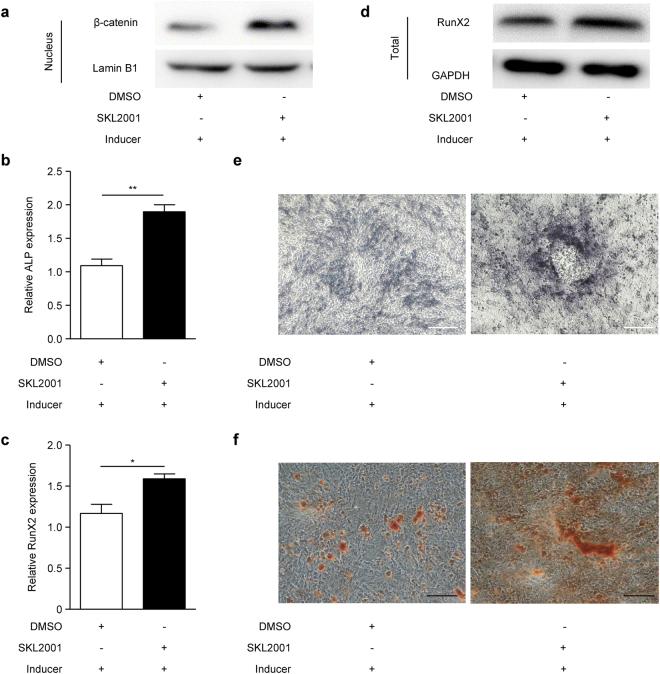Figure 4.
Wnt signalling agonist SKL2001 promotes EMSC osteogenic differentiation. (a–e) EMSCs were pre-treated with the Wnt signalling agonist SKL2001 (40 µM) or DMSO for 24 h, and then treated with osteogenic induction solution for another 7 days. On day 3, the osteogenic induction solution was changed and SKL2001 (40 µM) was added. On day 7, the cells were harvested. Then, nuclear (a) β-catenin protein levels were detected by Western blot, (b) ALP and (c) RunX2 mRNA levels were detected by qPCR, (d) RunX2 total protein was detected by Western blot, and (e) the ALP staining depth was observed by optical microscopy. Full-length blots of (d) are presented in Supplementary Figure S2b. (f) EMSCs were pre-treated with SKL2001 (40 µM) or DMSO for 24 h, and then treated with osteogenic induction solution for another 21 days. The osteogenic induction solution was changed every three days and SKL2001 (40 µM) was added each time. Then, the mineralized nodules were photographed after alizarin red staining. GAPDH was used as a total protein control and Lamin B1 was used as a nuclear protein control in Western blot. GAPDH was used as a control in qPCR. Scale bar represents 50 μm in ALP staining and 150 μm in alizarin red staining. ALP staining, alkaline phosphatase staining and Inducer, the osteogenic induction solution. The results represent the mean ± SD from three independent experiments performed in triplicate. *P < 0.05 and **P < 0.01.

